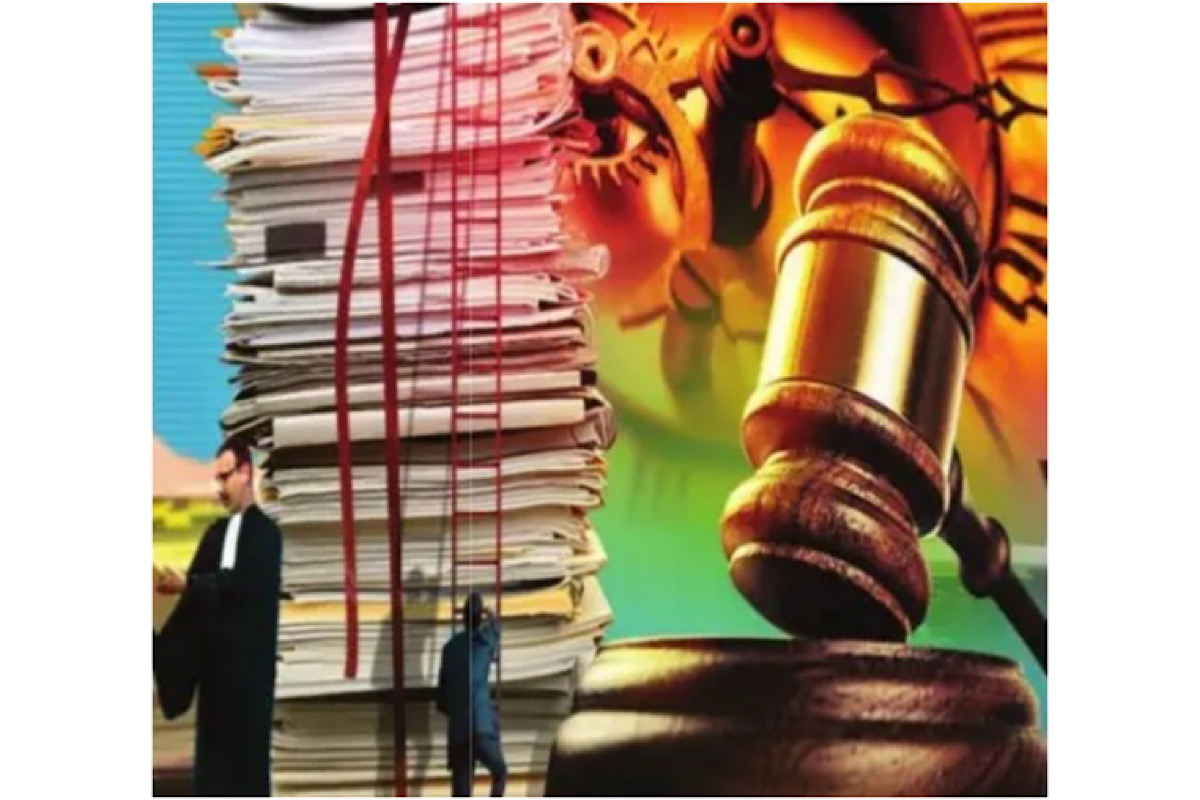Some international organisations have taken it upon themselves to rank different countries in respect of various parameters like democracy, freedom of religion, human development, hunger, etc. These rankings are often skewed in favour of the developed countries ~ often they also lack objectivity of assessment. Rankings given by an organisation even with dubious credibility also tend to be played up by the media and vested interests to present a country in good or bad light and are often utilised as inputs by international lending institutions and governments; they also add to or damage a country’s international standing and reputation.
It is therefore necessary to examine the methodology carefully before accepting such rankings at their face value. Here we shall examine three democracy indices prepared by (1) International Institute for Democracy and Electoral Assistance (IDEA) which is an intergovernmental organisation of 36 member states including India; (2) Economist Intelligence Unit (EIU) of The Economist, UK and (3) Freedom House, a US government-funded organisation.
The methodology followed by all these are similar: the final assessment is based on a few broad indicators which are measured by a set of sub-indicators which in turn are assessed by seeking answers to a set of questions pertaining to democracy and freedom.
The IDEA index is based on four indicators: representative government, fundamental rights, checks on government and impartial administration. Representative government is measured by clean elections, inclusive suffrage, free political parties, and elected government, while fundamental rights are measured by several indicators ~ access to justice, civil liberties and social rights and equality, of which civil liberties are measured by freedom of speech, of association and assembly, freedom of religion, movement and personal integrity and security. Social rights and equality are measured by basic welfare, social group equality and gender equality.
Checks on government are measured by effective parliament, judicial independence and media integrity, while impartial administration is measured by absence of corruption and predictable enforcement. Countries are ranked as high, mid-range or low performing democracies, authoritative and hybrid regimes. The 2022 report awarded India scores of 0.76, 0.58, 0.74, 0.49 in respect of the four broad parameters, placing it among midrange performers as distinguished from weak performers like the Russian Federation, East European countries, Nepal, Bangladesh, Thailand, Indonesia and most African countries. India’s low scores in respect of fundamental rights and impartial administration are due to its almost dysfunctional judicial system and its inability to get justice to the average citizen, inadequate social welfare and rising inequality, high level of corruption and ineffectiveness of the enforcing machinery. Few, I am sure, will disagree with the methodology and ranking.
The EIU’s Democracy Index is based on 60 indicators, grouped under five categories with equal weightage and measured on a scale of 10: electoral process and pluralism, functioning of government, political participation, political culture and civil liberties. Each country is classified as a full democracy (score 8-10), flawed democracy (score 6-8), hybrid regime (score 4-6) or else authoritarian regime. In its 2022 index, India with a score of 7.01 and 46th rank among 167 countries is classified as a flawed democracy along with the USA (score 7.85, rank 30). Only 24 countries have been classified as full democracies and 48 qualify as flawed democracies.
India’s scores in respect of the five broad parameters, viz. electoral process and pluralism, functioning of government, political participation, political culture and civil liberties are respectively 8.67, 7.50, 7.22, 5.63 and 6.18, the last two explaining India’s low rank. On political culture, the questions considered include the degree of societal consensus and cohesion, popular preference for a strong leader who bypasses parliament and elections, and for military rule or rule by experts and technocrats, popular perception about democracy vis-à-vis public order and economic performance and the extent of separation of the State and the Church. These are based on people’s perception and need not reflect the actual political realities. For example, people may prefer a leader to bypass Parliament to deliver what he has promised, but what is material is whether the leader actually bypasses the Parliament ~ if he does not, it testifies to the strength of the mechanism of checks and balances inherent in the democracy regardless of popular perception. Perception can be misleading and is often fluid, being subject to rapid changes in response to events. It is the reality rather than perception that should matter in determining the political culture of a country as an indicator of democracy. Incidentally, under no category is a question asked whether the country is a republic or monarchy. This obviously favours the north European countries, many of which are constitutional monarchies. Election of the head of the state apparently is not a concern of democracy.
As regards civil liberties, there are 17 questions. Five of these refer to freedom of expression ~ like existence of free electronic and print media and robustness of their coverage, freedom of expression and protest, and whether the internet is free from political restrictions. The only point that would go against India in this is the high degree of concentration of private ownership of national newspapers. Liberty to form trade unions and professional organisations, machinery for grievance redressal, independence of judiciary, absence of discrimination on the basis of race, religion etc, equality under law, basic security, property rights and personal freedoms enjoyed by the citizens as also the religious freedom are also the areas India manages reasonably well.
The questions that would clearly bring down India’s score, like use of torture by the state (frequent reports of custodial deaths), and the extent to which the government invokes new risks and threats as excuses for curbing civil liberties (laws like the Unlawful Activities Prevention Act (UAPA) or AFSPA, etc.) are also areas in which India needs to improve vastly ~ the earlier we accept that these are our flaws, the better for our democracy. Thus, while by and large the index is objective, there is scope of subjectivity and bias in the assessment.
The Freedom House Index of Freedom for 2021 lowered India’s grading from “free” to “partly free” status, citing the sufferings of millions of internal migrant workers, scapegoating of Muslims during the pandemic and alleged coercion of the opposition while awarding a score of 67 out of 100.
The 2022 report which reduced India’s score to 66 cited the UAPA, government’s crackdown on “love jihad” and its compelling Twitter and Facebook to delete offensive posts, its alleged use of Pegasus software for surveillance, etc., as reasons for continuing with the “partially free” rating. This is a narrative shared by many Western countries as well as our opposition, and the government has done precious little to dispel such notions. But apart from hyperbole, the methodology of its assessment will reveal several chinks.
The grading is assessed in two dimensions: Political Rights and Civil Liberties. The former is measured by (1) fairness of the electoral process, (2) political pluralism and participation, and (3) functioning of the government. India’s scores in these were respectively 12 out of 12, 12 out of 16, and 9 out of 12. India scored low in political pluralism due to the lack of adequate Muslim representation in Parliament and State assemblies, alleged attempt to disenfranchise Muslims though the CAA and NRC and use of repressive measures like detention camps in Assam for suspected non-citizens.
Allegations of disenfranchising would not perhaps withstand scrutiny, while the detention camps have caused untold sufferings to people ~ many of them genuine Indian citizens settled in the state for decades who could not produce the documents sought for various reasons. As regards government functioning, the low score was due to the absence of adequate safeguards against corruption. It is to be remembered that the government includes the state governments as well, and the spate of corruption scandals that has erupted with regular frequencies from states, West Bengal probably topping the list, would rather support the low score of India in this regard.
As regards civil liberties, India scored 33 out of a total 60 (freedom of expression: 9 out of 16; association and organisational rights: 7 out of 12; rule of law: 8 out of 16; personal autonomy and individual rights: 9 out of 16). Though each of these parameters is assessed by an elaborate set of questions, it is here that subjectivity seems to have scored over objectivity. The assessment would delight the opposition when it points to the absence of independence in media, judiciary, academic institutions, trade unions, NGOs, etc. some of which seem a tad far-fetched.
In support of the grades, the report cites certain instances of infringements, but in a large, complex and diverse country like India, there exist not one but many narratives. Assessing a country only by some instances of failures while ignoring numerous instances of successes is unfair.
Most Indians would disagree that our judiciary or media lack independence or that all our academic institutions have been infiltrated by the RSS and are being politically indoctrinated, as the report alleges. They probably reflect the inherent Western bias against India rather than the reality of life.
The legitimacy or authority of such institutions to rank other countries also needs to be questioned, especially in the total absence of any attempt to take the assessed countries’ views into consideration. Governments of developing countries would be within their rights to reject such a report as an attempt to impose a prejudicial Western view of false superiority
(The writer is a commentator, author and academic )












